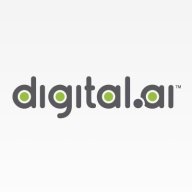

Red Hat Ansible Automation Platform and Digital.ai Release are direct competitors in IT automation and release management. Red Hat Ansible Automation Platform seems to have the upper hand in pricing and ease of deployment, whereas Digital.ai Release has more comprehensive features.
Features: Red Hat Ansible Automation Platform offers powerful automation capabilities, integration with diverse IT environments, and a straightforward setup. Digital.ai Release provides robust release management features, complex release process handling, and deep integration focus, making it suitable for intricate deployments.
Room for Improvement: Red Hat Ansible Automation Platform could benefit from enhanced GUI features, more extensive documentation, and user-friendly customization options. Digital.ai Release may improve in offering a smoother learning curve, more cost-effective pricing strategies, and better user interface simplification for non-technical users.
Ease of Deployment and Customer Service: Red Hat Ansible Automation Platform is praised for its easy deployment and excellent customer support, backed by a strong community and professional services. Digital.ai Release, while known for its sophisticated capabilities, presents a steeper learning curve, impacting initial deployment ease, and requires more targeted customer guidance.
Pricing and ROI: Red Hat Ansible Automation Platform is recognized for competitive pricing and favorable ROI, with lower setup costs and efficient resource use. Digital.ai Release, although offering extensive features justifying higher costs, presents challenges in initial setup expenses. Red Hat's pricing structure is more cost-effective, whereas Digital.ai focuses on the long-term ROI for advanced feature needs.
| Product | Market Share (%) |
|---|---|
| Red Hat Ansible Automation Platform | 5.0% |
| Digital.ai Release | 1.1% |
| Other | 93.9% |


| Company Size | Count |
|---|---|
| Small Business | 24 |
| Midsize Enterprise | 8 |
| Large Enterprise | 48 |
Automate, orchestrate, and gain visibility into your release pipelines at scale using Digital.ai Release, a release management tool that is designed for enterprises. Control and track releases, standardize processes, and bake compliance and security into your software release pipelines.
Red Hat Ansible Automation Platform is a powerful network automation solution that allows organizations to handle every aspect of their application launch process within a single product. It enables users to share their automations so that teams within an organization can collaborate on various projects with ease. Ansible Automation Platform is designed to be used by all employees involved in the network automation process.
Red Hat Ansible Automation Platform Benefits
Some of the ways that organizations can benefit by choosing to deploy Red Hat Ansible Automation Platform include:
Red Hat Ansible Automation Platform Features
Reviews from Real Users
Red Hat Ansible Automation Platform is a highly effective solution that stands out when compared to many of its competitors. Two major advantages it offers are its automation manager and its comprehensive centralized GUI-based management interface.
MD J., a solution architect at STBL, says, “The automation manager is very good and makes things easier for customers with multi-cloud platforms.”
Aankit G., a Consultant at Pi DATACENTERS, writes, “We like the GUI-based interface for the tower. Before, we only had a command-line interface to run all the Ansible tasks. Now, the Ansible tower provides the complete GUI functionality to run, manage, and create the templates and the Ansible jobs. This includes the code and YAML file we can create. The GUI interface is the added advantage of this solution, including some integration with the different plugins.”
We monitor all Release Automation reviews to prevent fraudulent reviews and keep review quality high. We do not post reviews by company employees or direct competitors. We validate each review for authenticity via cross-reference with LinkedIn, and personal follow-up with the reviewer when necessary.